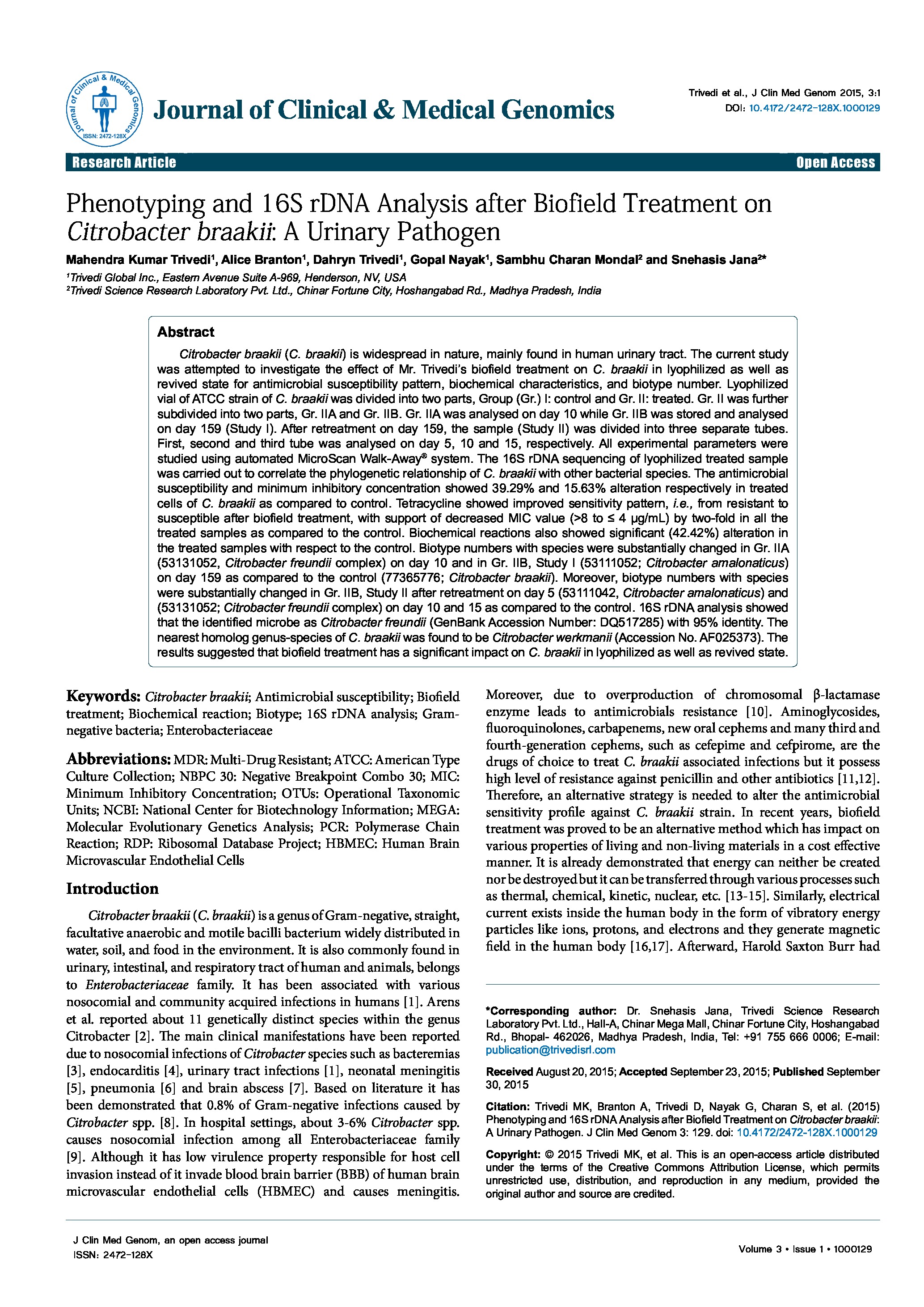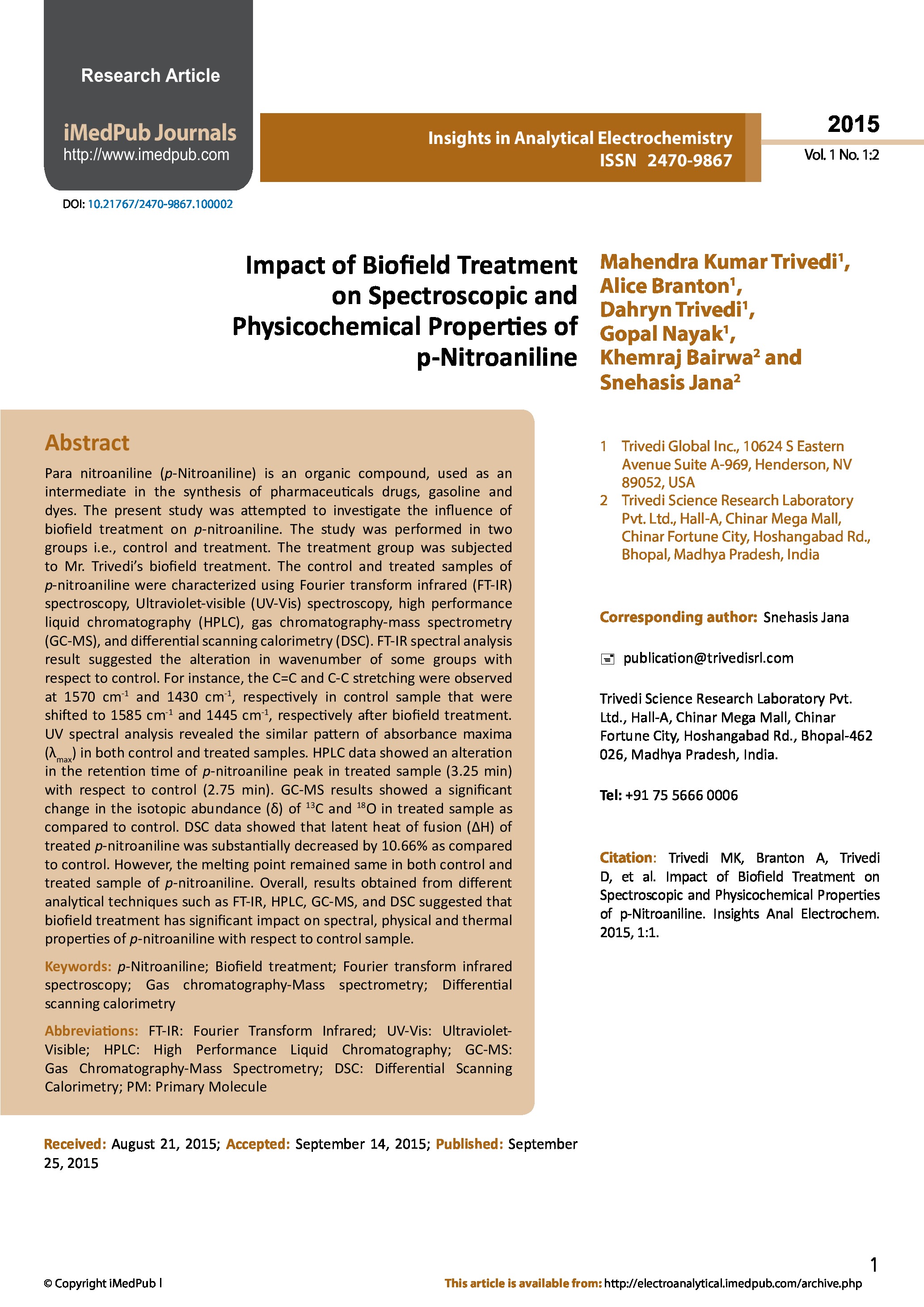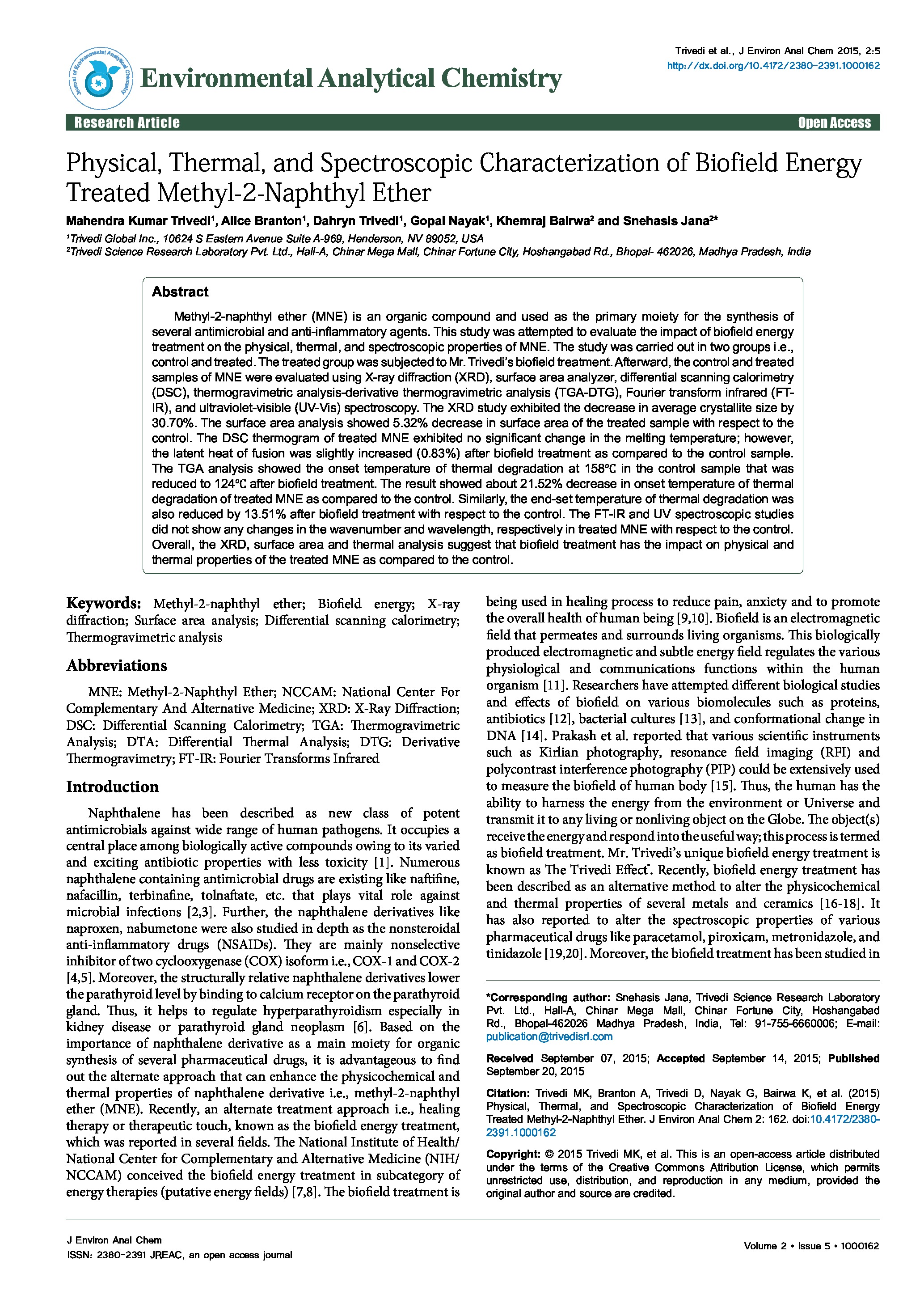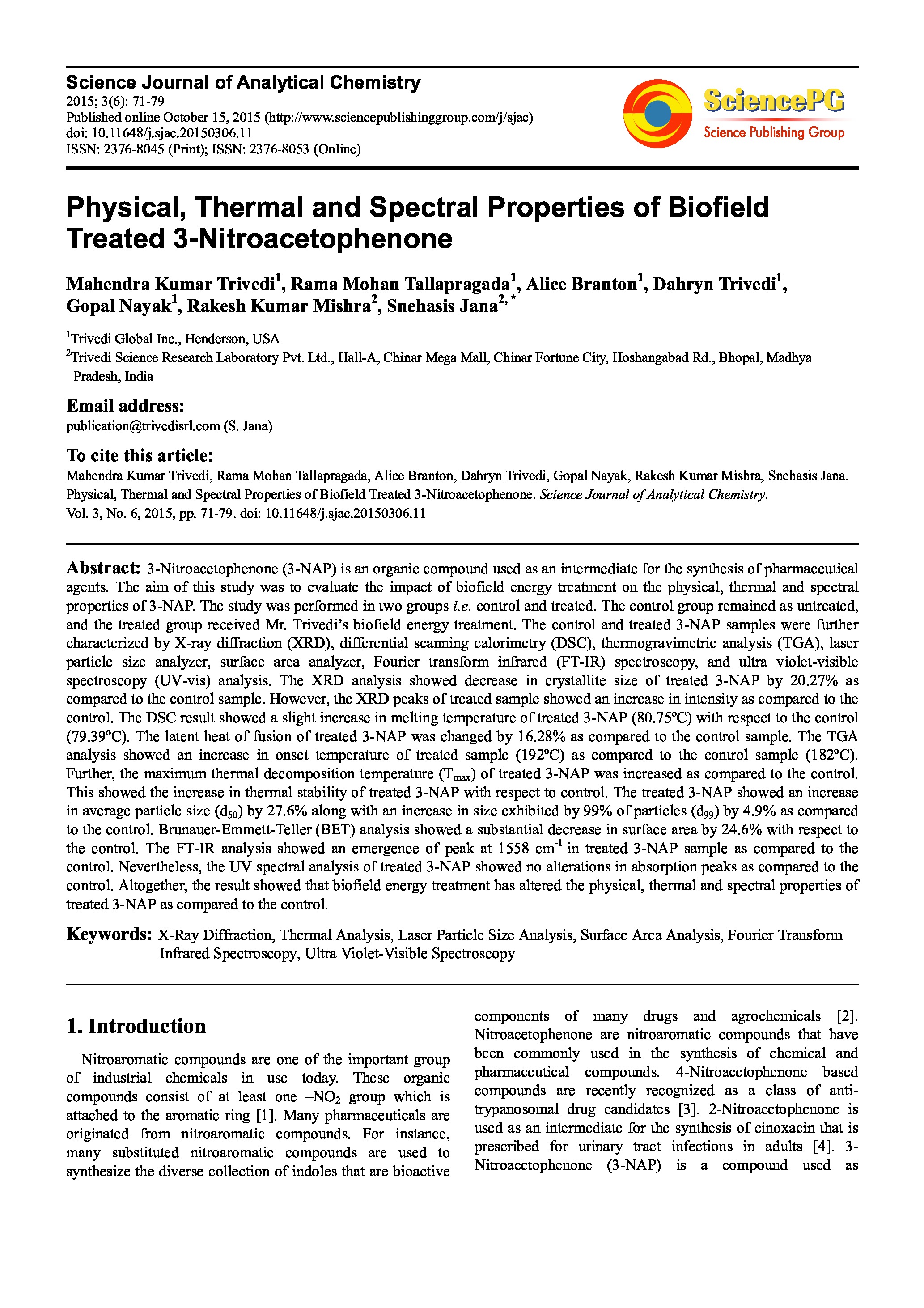Date of upload:
21.11.2016
Co-author:
Mahendra Kumar Trivedi, Dahryn Trivedi, Gopal Nayak, Sambhu Charan Mondal, Snehasis Jana
Abstract:
Citrobacter braakii (C. braakii) is widespread in nature, mainly found in human urinary tract. The current study was attempted to investigate the effect of Mr. Trivedi’s biofield treatment on C. braakii in lyophilized as well as revived state for antimicrobial susceptibility pattern, biochemical characteristics, and biotype number. Lyophilized vial of ATCC strain of C. braakii was divided into two parts, Group (Gr.) I: control and Gr. II: treated. Gr. II was further subdivided into two parts, Gr. IIA and Gr. IIB. Gr. IIA was analysed on day 10 while Gr. IIB was stored and analysed on day 159 (Study I). After retreatment on day 159, the sample (Study II) was divided into three separate tubes. First, second and third tube was analysed on day 5, 10 and 15, respectively. All experimental parameters were studied using automated MicroScan Walk-Away® system. The 16S rDNA sequencing of lyophilized treated sample was carried out to correlate the phylogenetic relationship of C. braakii with other bacterial species. The antimicrobial susceptibility and minimum inhibitory concentration showed 39.29% and 15.63% alteration respectively in treated cells of C. braakii as compared to control. Tetracycline showed improved sensitivity pattern, i.e., from resistant to susceptible after biofield treatment, with support of decreased MIC value (>8 to ≤ 4 µg/mL) by two-fold in all the treated samples as compared to the control. Biochemical reactions also showed significant (42.42%) alteration in the treated samples with respect to the control. Biotype numbers with species were substantially changed in Gr. IIA (53131052, Citrobacter freundii complex) on day 10 and in Gr. IIB, Study I (53111052; Citrobacter amalonaticus) on day 159 as compared to the control (77365776; Citrobacter braakii). Moreover, biotype numbers with species were substantially changed in Gr. IIB, Study II after retreatment on day 5 (53111042, Citrobacter amalonaticus) and (53131052; Citrobacter freundii complex) on day 10 and 15 as compared to the control. 16S rDNA analysis showed that the identified microbe as Citrobacter freundii (GenBank Accession Number: DQ517285) with 95% identity. The nearest homolog genus-species of C. braakii was found to be Citrobacter werkmanii (Accession No. AF025373). The results suggested that biofield treatment has a significant impact on C. braakii in lyophilized as well as revived state.




